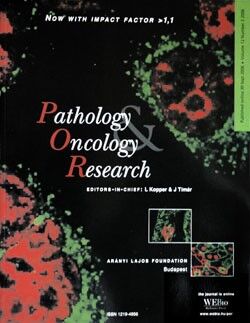Comorbidities and outcomes of patients with chronic myeloid leukemia treated with tyrosine kinase inhibitors: a real-world, nationwide, retrospective study from Hungary
Peter Batar, Hussain Alizadeh, Gyorgy Rokszin, Zsolt Abonyi-Toth and Judit Demeter (Pathology & Oncology Research, https://doi.org/10.3389/pore.2024.1611497)

Purpose: This study aimed to provide real-world evidence on the characteristics, treatment patterns, and outcomes of patients with chronic myeloid leukemia (CML) receiving tyrosine kinase inhibitor (TKI) treatment in Hungary between 2011 and 2019.
Patients and methods: This nationwide, retrospective study included patients who were newly diagnosed with CML in Hungarian clinical practice between January 2011 and December 2019. The analysis was based on the reimbursed prescription claims for imatinib, bosutinib, dasatinib, nilotinib, or ponatinib with the ICD-10 code C9210 in a public pharmacy between January 2009 and December 2019 using data from the National Health Insurance Fund (NHIF) of Hungary. CML incidence and prevalence, TKI treatment patterns, comorbidities, and overall survival (OS) were examined.
Results: Between 2011 and 2019, altogether 1,407 patients were diagnosed with CML, with an annual average of 156 patients. The number of patients newly initiating first-line TKI therapy for CML significantly increased between 2011 and 2019 (2011: n = 136 vs. 2019: n = 191; p = 0.0043). Nilotinib was typically prescribed for younger patients (≤64 years), while older patients (≥65 years) mostly received imatinib. The most common comorbidity of CML patients was hypertension, and the proportion of patients with other malignancies was relatively high in all treatment groups. 5-year OS was 77.1% during the whole study period. Patients initiating first-line TKI treatment for CML in 2015 had significantly better 4-year OS compared to those starting treatment in 2011 (82.4% vs. 73.5%, respectively, (HR 0.53 (95%CI 0.32–0.87) p = 0.0118).
